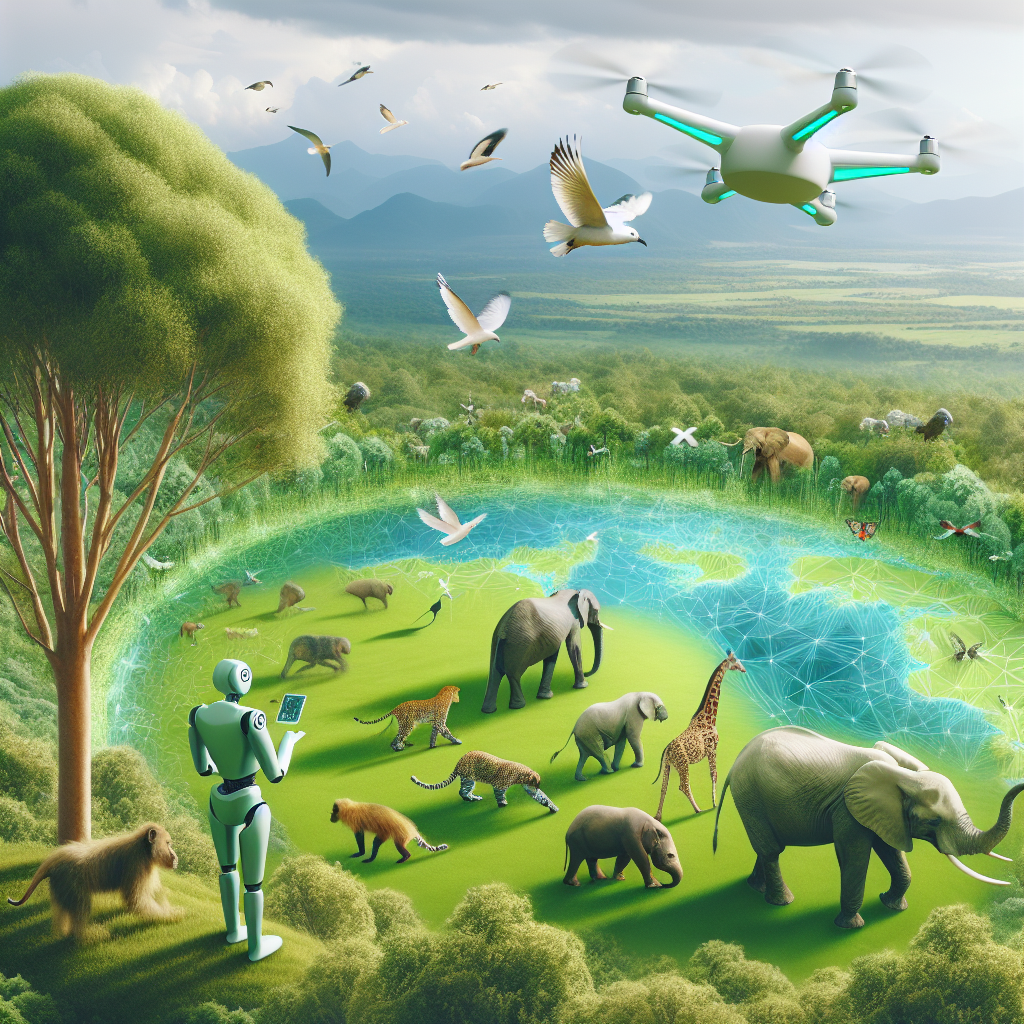Ethical AI in Wildlife Conservation: Enhancing Sustainability and Resilience
Introduction
Wildlife conservation is a critical issue facing our planet today. With the increasing threats of climate change, habitat destruction, poaching, and other human-induced activities, many species are facing the risk of extinction. In order to effectively protect and preserve wildlife, it is crucial to leverage advanced technologies such as Artificial Intelligence (AI) to enhance sustainability and resilience in conservation efforts.
Ethical AI in wildlife conservation refers to the application of AI technologies in a manner that is guided by ethical principles and values, ensuring that the use of AI is beneficial for both wildlife and the environment. By harnessing the power of AI in wildlife conservation, researchers and conservationists can gain valuable insights, improve monitoring and surveillance efforts, and develop more effective strategies for protecting endangered species and their habitats.
Benefits of Ethical AI in Wildlife Conservation
1. Enhanced Monitoring and Surveillance: AI-powered tools such as drones, camera traps, and satellite imagery can be used to monitor wildlife populations and track their movements in real-time. This enables conservationists to gather valuable data on species distribution, behavior, and habitat use, helping them to identify threats and implement targeted conservation measures.
2. Predictive Analytics: AI algorithms can analyze large datasets to predict future trends and patterns in wildlife populations, enabling conservationists to proactively address potential threats and devise conservation strategies that are more effective and sustainable.
3. Anti-Poaching Efforts: AI technologies can be used to develop advanced anti-poaching systems that can detect and deter illegal activities such as poaching and wildlife trafficking. By deploying AI-powered surveillance systems in key conservation areas, conservationists can better protect endangered species from human threats.
4. Habitat Restoration: AI can be used to analyze ecological data and develop models for habitat restoration and conservation planning. By identifying areas that are critical for the survival of endangered species, conservationists can prioritize conservation efforts and implement targeted interventions to restore degraded habitats.
5. Public Engagement: AI-powered tools such as virtual reality experiences and interactive apps can be used to raise awareness about wildlife conservation and engage the public in conservation efforts. By leveraging AI technologies to create immersive educational experiences, conservationists can inspire people to take action and support conservation initiatives.
Challenges and Considerations
While AI holds great promise for enhancing sustainability and resilience in wildlife conservation, there are also challenges and ethical considerations that need to be addressed. Some of the key challenges include:
1. Data Bias: AI algorithms are only as good as the data they are trained on. If the training data is biased or incomplete, the AI system may produce inaccurate results or reinforce existing biases. It is important for conservationists to carefully consider the quality and diversity of the data used to train AI models to ensure that they are reliable and unbiased.
2. Privacy and Data Security: AI-powered surveillance systems raise concerns about privacy and data security, particularly when monitoring wildlife in sensitive or protected areas. Conservationists must establish clear guidelines and protocols for data collection and storage to protect the privacy of wildlife and prevent unauthorized access to sensitive information.
3. Transparency and Accountability: Ethical AI in wildlife conservation requires transparency and accountability in the development and deployment of AI technologies. Conservationists must be transparent about how AI is being used in conservation efforts and ensure that decisions are made ethically and in the best interests of wildlife and the environment.
4. Human-Wildlife Conflict: AI technologies can help mitigate human-wildlife conflicts by providing early warning systems and predictive analytics to prevent conflicts before they occur. However, conservationists must also consider the social and economic impacts of conservation interventions on local communities and ensure that they are inclusive and sustainable.
Frequently Asked Questions (FAQs)
1. How can AI help in the fight against poaching?
AI-powered tools such as drones, camera traps, and satellite imagery can be used to monitor wildlife populations and detect illegal activities such as poaching. By analyzing large datasets and using predictive analytics, conservationists can identify poaching hotspots and deploy anti-poaching efforts more effectively.
2. What are some examples of AI technologies used in wildlife conservation?
Examples of AI technologies used in wildlife conservation include facial recognition software for identifying individual animals, predictive analytics for monitoring population trends, and machine learning algorithms for analyzing ecological data and developing conservation strategies.
3. How can AI be used to restore degraded habitats?
AI can be used to analyze ecological data and develop models for habitat restoration and conservation planning. By identifying areas that are critical for the survival of endangered species, conservationists can prioritize conservation efforts and implement targeted interventions to restore degraded habitats.
4. What ethical considerations should be taken into account when using AI in wildlife conservation?
Ethical considerations when using AI in wildlife conservation include ensuring data privacy and security, addressing data bias, promoting transparency and accountability, and mitigating human-wildlife conflicts. Conservationists must prioritize ethical principles and values in the development and deployment of AI technologies to ensure that they benefit both wildlife and the environment.
Conclusion
Ethical AI in wildlife conservation has the potential to enhance sustainability and resilience in conservation efforts, enabling researchers and conservationists to protect endangered species and their habitats more effectively. By harnessing the power of AI technologies in a manner that is guided by ethical principles and values, conservationists can leverage advanced tools and insights to address key conservation challenges and promote biodiversity conservation. As we continue to face increasing threats to wildlife and the environment, it is essential to embrace AI as a powerful tool for conservation and work towards a more sustainable and resilient future for all species on our planet.

